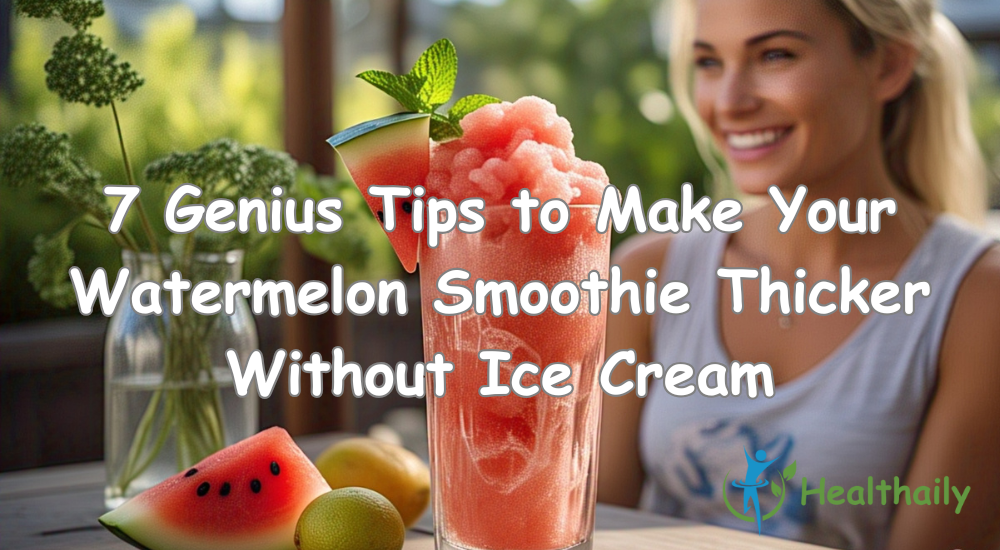Creating a thick watermelon smoothie without using ice cream is easier than you might think. With the right ingredients and a few simple techniques, you can enjoy a rich, creamy texture using healthy, low-calorie options. In this article, I’ll share seven effective methods I’ve used to give my watermelon smoothies a thick, satisfying consistency—no ice cream involved.
1. Use Frozen Watermelon Cubes
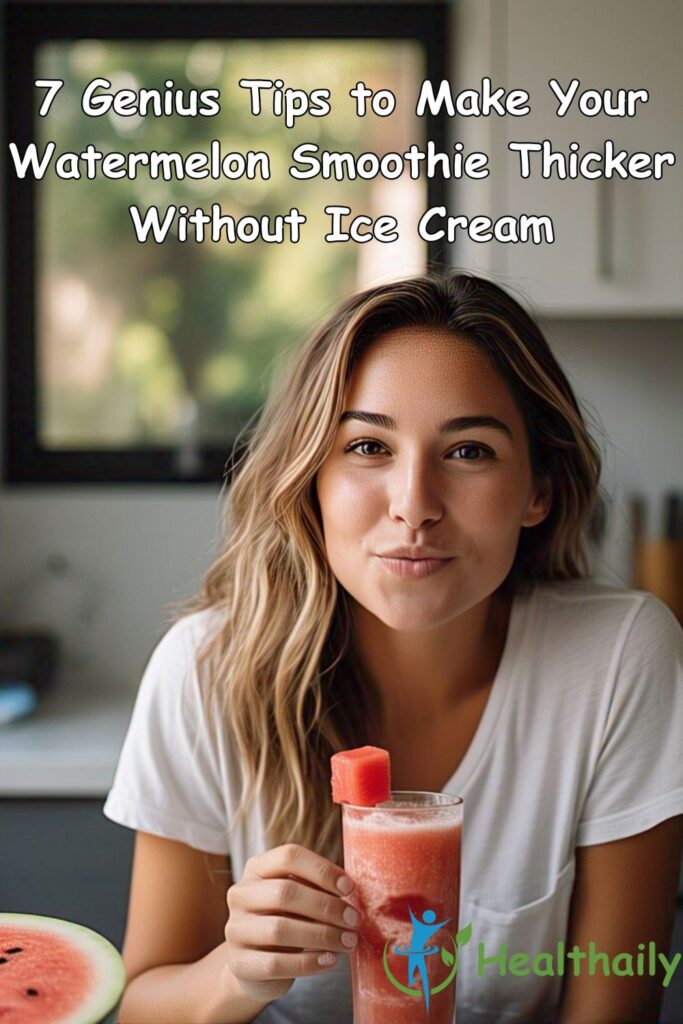
Frozen watermelon is the most direct way to thicken your smoothie while keeping it refreshing and naturally sweet. I always cut watermelon into small cubes and freeze them in a single layer on a baking sheet. Once they’re solid, I transfer them to a sealed container.
When blended, these cubes create a slushy, thick texture that mimics ice cream but without the added sugar or fat. It also removes the need for ice, which usually waters down the flavor. I’ve found this method ideal for hot mornings or post-workout refuels.
Quick Tip: Use seedless watermelon to save time and avoid gritty texture.
2. Add Greek Yogurt

Greek yogurt gives watermelon smoothies a creamy texture and adds protein, which helps you feel fuller for longer. I like using plain, non-fat Greek yogurt because it’s thick and doesn’t overpower the watermelon’s flavor. It also helps stabilize the smoothie so it doesn’t separate too quickly.
Just ½ cup is enough to boost thickness. If you want a bit more tang, try using a vanilla-flavored version—but check the sugar content if you’re keeping it low-calorie.
Why It Works: The strained consistency of Greek yogurt binds the ingredients together, making each sip smooth and rich.
3. Blend in Rolled Oats

Rolled oats are a great natural thickener. When blended, they swell and absorb liquid, creating a denser texture without altering the taste. I use 2 to 3 tablespoons of oats per smoothie. They mix well with watermelon and help make the drink more satisfying.
Oats also add fiber, which slows digestion and helps maintain energy levels. If you have a high-speed blender, you don’t need to pre-soak them. If your blender is less powerful, soak the oats in water or almond milk for 10 minutes to soften them first.
Best Pairing: I find oats blend well with watermelon and a touch of lime juice.
4. Use Chia Seeds or Flaxseeds
Chia and flaxseeds absorb liquid and expand, turning a watery smoothie into a thick, spoonable drink. These seeds are loaded with fiber, omega-3 fats, and antioxidants. I usually add 1 tablespoon of chia seeds or ground flaxseeds, then let the smoothie sit for 5–10 minutes before drinking.
This waiting time lets the seeds soak and gel, giving the smoothie a denser texture. Chia seeds work better if you’re okay with a pudding-like result, while flaxseeds blend smoother if you prefer a more drinkable consistency.
Note: Use ground flaxseeds for better digestion and nutrient absorption.
5. Mix in Silken Tofu or Avocado
Both silken tofu and avocado add body to a watermelon smoothie without changing its fresh flavor. I use about ¼ to ½ cup of either, depending on how thick I want the result.
Silken tofu is tasteless but adds a creamy feel and a protein boost. Avocado provides healthy fats and a rich mouthfeel. Both options work well for people following plant-based diets or looking to replace dairy.
Flavor Balance: To preserve the bright taste of watermelon, I pair these with citrus or mint.

6. Add Coconut Cream or Nut Butters (In Small Amounts)
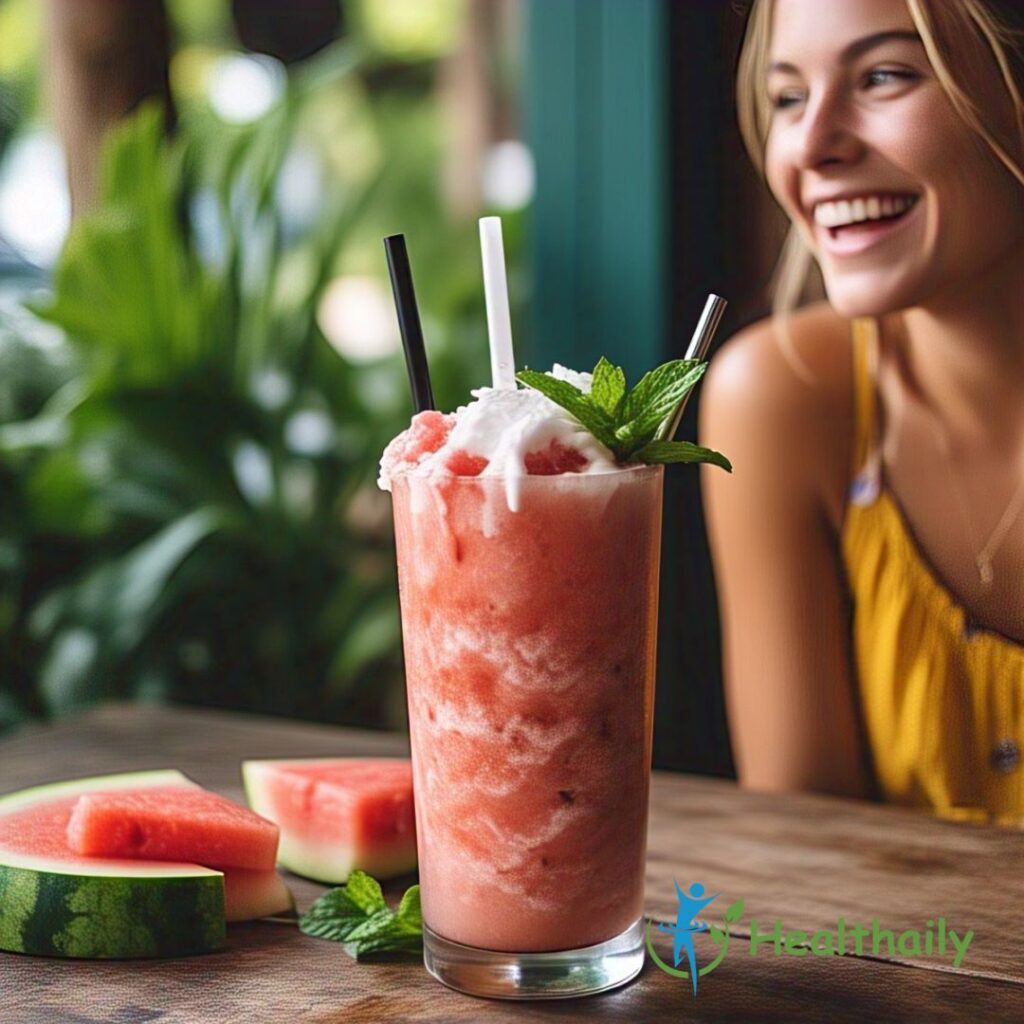
Coconut cream adds a smooth, tropical flavor and a dense texture. Just 1–2 tablespoons thickens the smoothie without overpowering the watermelon. Nut butters like almond, peanut, or cashew also work, though they bring a stronger flavor and more calories.
I find that cashew butter has the mildest taste, making it perfect for smoothies where you want watermelon to shine. If I’m craving something more filling, I might use peanut butter and add a pinch of cinnamon.
Smart Tip: Stick to small amounts to avoid turning your smoothie into a calorie-heavy shake.
7. Blend with Less Liquid
The simplest fix is to reduce the liquid you use. Most people add too much almond milk, water, or juice at the start, making the smoothie thin. I start with only ¼ cup of liquid and add more slowly if needed.
This lets the watermelon’s natural water content work to your advantage. Watermelon already holds about 92% water, so using minimal added liquid keeps the smoothie thick and spoonable.
Extra Bonus: You get a more intense watermelon flavor when it’s not diluted by excess liquid.
Additional Tips to Make It Work Better
Chill Everything First:
Cold ingredients blend thicker. I keep all produce and liquids in the fridge before use. This also helps the smoothie hold its shape longer.
Layer Ingredients Smartly:
Put frozen fruit at the bottom and liquids on top when using a high-speed blender. This helps blend thick mixtures without overheating the motor.
Add Ice Sparingly (If at All):
If you must use ice, add it last and in small amounts. Too much ice waters down the taste and creates an uneven texture.
Use a High-Speed Blender:
A strong blender handles fibrous fruits, oats, and seeds better. It gives you a smoother finish without chunks.
Garnish With Thick Toppings:
A smoothie that looks thick should also feel satisfying. Top it with granola, nuts, or shredded coconut for more bite and fullness.
Download below infographic for future use
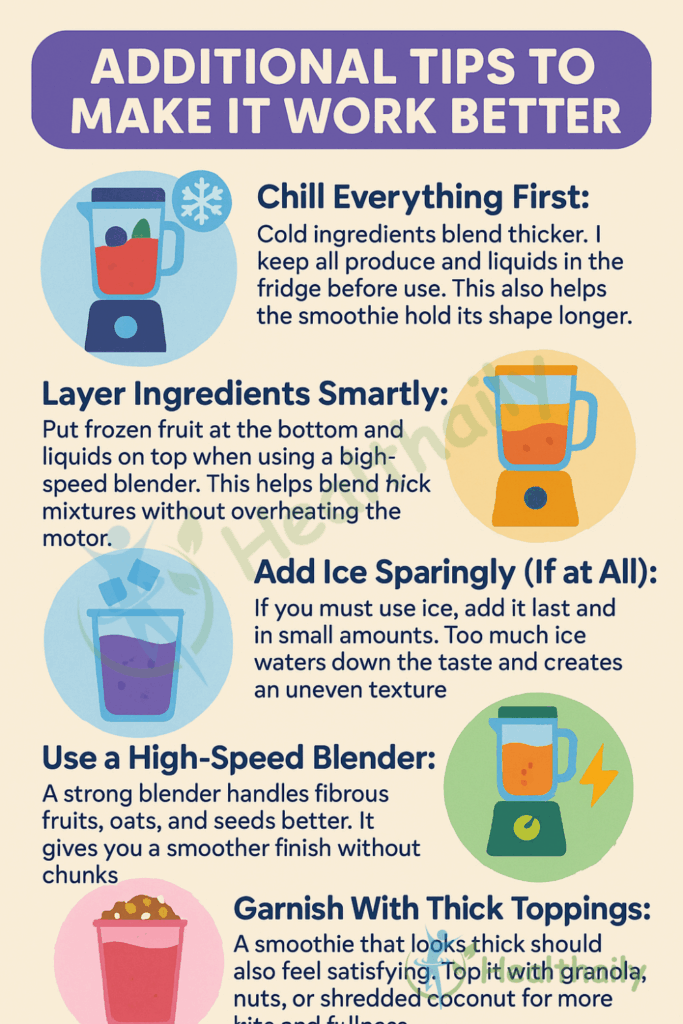
Sample Thick Watermelon Smoothie Recipe (Without Ice Cream)
Ingredients:
- 2 cups frozen watermelon cubes
- ½ cup plain Greek yogurt
- 2 tablespoons rolled oats
- 1 tablespoon chia seeds
- ¼ avocado
- ¼ cup unsweetened almond milk
- 1 teaspoon lime juice
- Fresh mint for garnish (optional)
Instructions:
- Place frozen watermelon cubes at the bottom of your blender.
- Add Greek yogurt, oats, chia seeds, and avocado.
- Pour almond milk over the top.
- Blend on high until smooth and thick.
- Let it sit for 5 minutes to allow the chia seeds to gel.
- Pour into a glass or bowl and garnish with mint or sliced fruit.
Texture:
This smoothie is spoon-thick, creamy, and easy to enjoy as a quick breakfast or snack. No ice cream, no guilt.
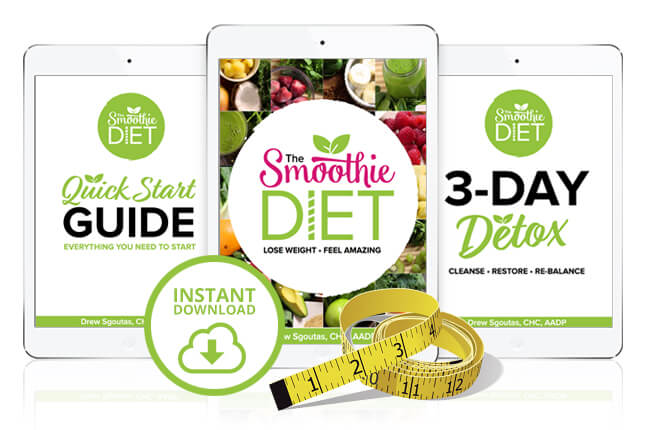
Download The 21-Day Smoothie Diet Right Now!
Why I Love These Alternatives
They’re healthy. They don’t rely on artificial thickeners. And they let the watermelon shine as the hero ingredient. I enjoy how each method brings something different—whether it’s protein, fiber, or a tropical twist.
More importantly, these tweaks help me control calories, sugar, and fat while still getting that smooth, indulgent feel that makes a smoothie satisfying.
Whether you’re trying to lose weight, stay energized, or just eat cleaner, these tricks fit any goal. No ice cream, no problem.
Final Thoughts
Thickening your watermelon smoothie doesn’t have to mean adding sugar or dairy-heavy ingredients. With just a few smart swaps—frozen fruit, oats, seeds, tofu, avocado—you can enjoy a smoothie that’s rich, filling, and clean.
I’ve tested each method myself, and they all work depending on the flavor and texture I want that day. So next time your smoothie turns out too watery, don’t reach for the ice cream. Try one of these seven tricks and take your watermelon smoothie to the next level—naturally.

